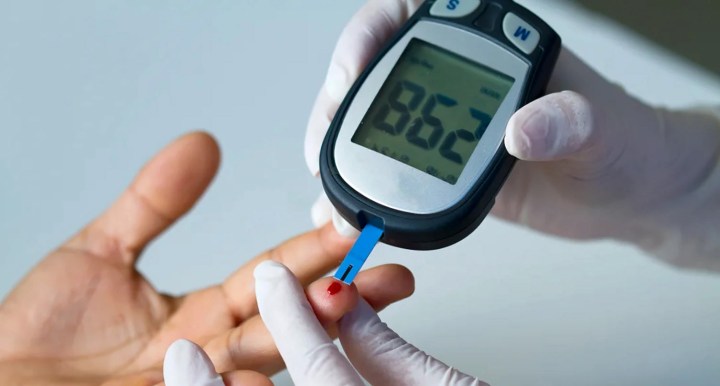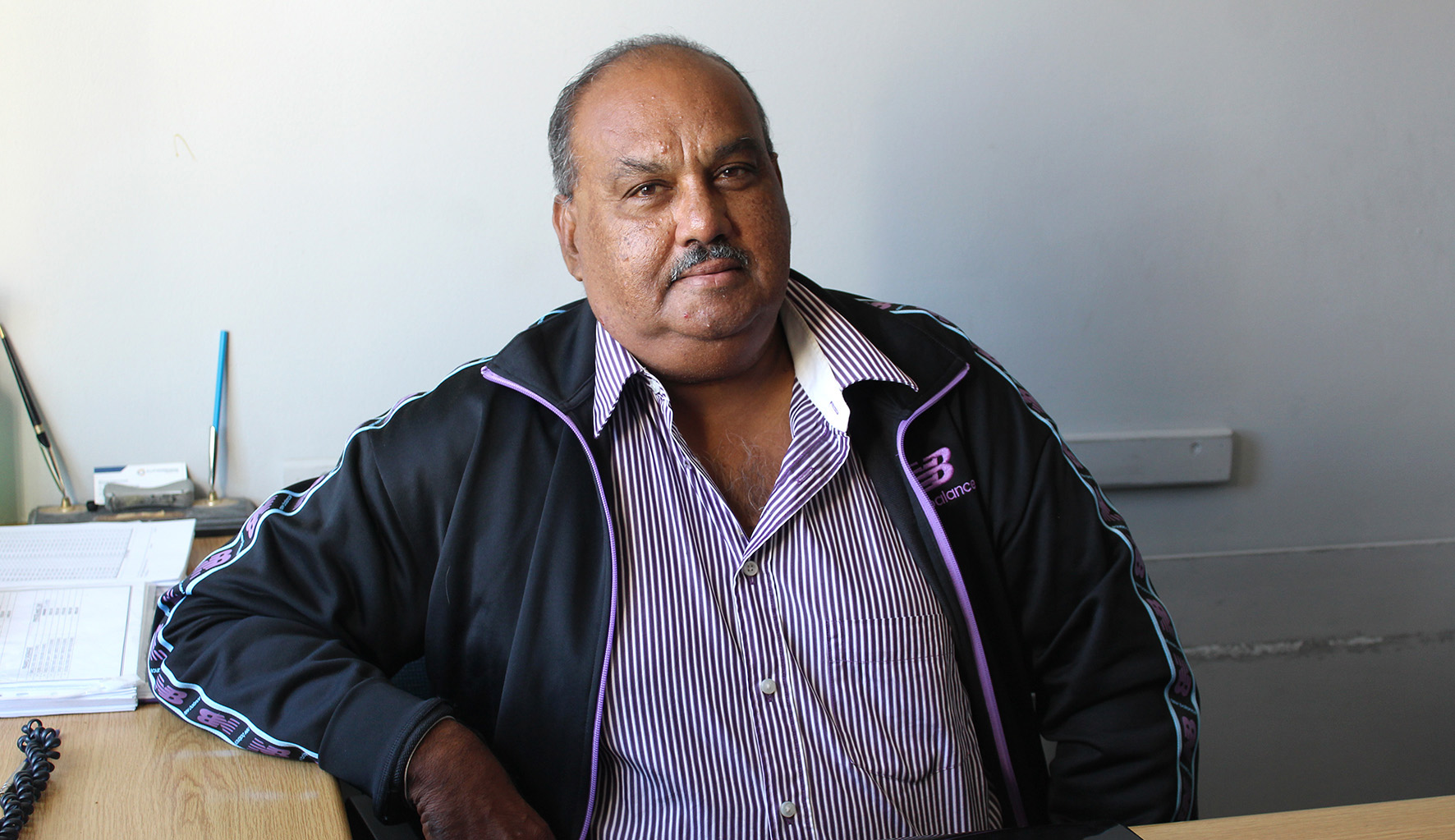DIABETES
SA needs more public health podiatrists to stem diabetes-related amputations

A proper podiatric programme has the potential to reduce the number of diabetic patients who face diabetic ulceration and amputation. However, South Africa currently has a shortage of podiatrists. There are only about 45 such professionals in the country’s public health sector, and only one school of podiatry on the African continent.
Podiatrists, being those healthcare professionals who specialise in foot care and the treatment of problems affecting the lower limbs, play an important role in reducing diabetes-related amputations. When positioned correctly within the healthcare system, they can provide minor treatments, pick up complications and ensure hospital referrals occur early on in dealing with diabetes-related complications, according to Simiso Ntuli, the head of podiatry at the University of Johannesburg’s (UJ) faculty of health sciences.
However, there is currently a shortage of podiatrists in South Africa, particularly in state and primary healthcare. There are about 300 podiatrists registered with the Health Professions Council of South Africa, of which around a sixth work in the public health sector, according to Lucas Breedt, national executive secretary of the Podiatry Association of South Africa.
“This is the case not because podiatrists ‘choose’ to be in the private sector rather than the public sector, but because the public sector has yet to make adequate provisions for the profession,” said Breedt.
There are about 45 state-employed podiatrists in Gauteng and three in KwaZulu-Natal (KZN), according to Sean Pincus, a podiatrist in Cape Town. He added that he is not aware of podiatrists in public health in any other province, with the exception of the Diabetes Centre that recently launched at Groote Schuur Hospital in Cape Town.
Ntuli confirmed that there are between 45 and 50 podiatrists in public health in Gauteng. Daily Maverick reached out to the National Health Department, as well as the departments of health in KZN and the Western Cape, about the number of state-employed podiatrists in their respective regions. However, they were unable to provide responses at the time of publishing.
Diabetes: A silent pandemic
Amputations in people living with diabetes in South Africa are common and a major source of morbidity, reduction in quality of life, loss of employment and mortality – particularly for those patients accessing their care in the public sector, according to Professor Joel Dave, who launched the Diabetic Centre at Groote Schuur Hospital and is head of the department of endocrinology at the health facility.
The latest International Diabetes Federation Atlas, released in 2021, puts the number of South African adults between 20 and 79 years of age with diabetes at 4,234,000. This amounts to 11.3% of the adult population. A further 1,922,200 are estimated to be living with undiagnosed diabetes. South Africa falls within the top five countries for the number of people with diabetes in Africa.
“It’s a fair assessment that they reckon [that] as many patients have been diagnosed, [there] are the same number of people who haven’t been diagnosed. So, the disease is twice as big as we think it is. By the time somebody gets diagnosed, they’ve usually been living with diabetes for five to 10 years, and that’s when they arrive and there’s already been damage done,” said Pincus.
One of the complications of living with high blood sugar for a sustained period of time is diabetic neuropathy, which is damage to the nerves as a result of diabetes, according to a World Health Organisation fact sheet on the disease. This can cause tingling, pain, numbness or weakness in the feet and hands, and when combined with reduced blood flow, increases the likelihood of foot ulcers and limb amputation.
“70% [of people living with diabetes] will have some form of sensory loss and that’s the problem, is that we talk about them losing their exquisite sensation of pain. Because pain is a protective mechanism – if something hurts, you know something’s wrong,” said Pincus.
Diabetic neuropathy results in diabetic patients being unable to feel when there is something wrong with their feet. The “pathway” that is often seen in the diabetic foot is that friction causes a callus or corn; the callus or corn then breaks down and becomes an ulcer; the ulcer becomes infected; the infection causes gangrene; and this complication leads to amputation, explained Pincus.
“Podiatrists would get involved in the friction [and] callus part,” he said. “So, if somebody’s got a callus on their foot, we cut the callus off, we advise them on footwear, we reinforce everything the doctors have said – even about their blood sugar control, reinforcing medication, [making] sure they understand.” Podiatrists also assist patients in learning how to prevent and manage ulcers.
Around the world, a diabetic foot ulcer is reported about once every 1.2 seconds, with 15 to 20% of patients with diabetes developing diabetic foot ulceration, said Pincus. There is an amputation related to diabetic foot ulceration about once every 20 seconds.
“We know that there are around 250,000 patients with diabetes in the Western Cape – these are the ones we know are diagnosed,” said Pincus. “If you take those statistics, that 15 to 20% of people will get diabetic foot ulceration, it equates to around 37,500 patients with ulcers on their feet.”
Mark van der Heever, deputy director for communications in the Western Cape Department of Health, said that 286,026 individuals were started on treatment for diabetes in the public sector in the Western Cape between January 2021 and December 2021.
At Groote Schuur Hospital, the Acute Care Surgery Unit sees two to three diabetic-related amputations per week on average, ranging from minor foot debridement to major limb amputations, according to Prof Christo Kloppers, head of acute-care surgery at the hospital.
“Unfortunately, the need for emergency surgery in diabetes is a surrogate of poor diabetic care,” said Kloppers. “Education and access to basic interventions like diet modifications seem limited. We do not have access to podiatrists for ongoing diabetic foot care to prevent these adverse outcomes, nor to an orthotic service post-surgery for shoe modification.”
“Just walking through the acute surgical wards of Groote Schuur one will clearly see that diabetes and obesity represent another pandemic in South Africa,” he continued.
The vascular surgery unit at Charlotte Maxeke Johannesburg Academic Hospital, meanwhile, performs between two and five major diabetes-related amputations in a week, according to Dr Taalib Monareng, head of the unit. He emphasised that this only reflects amputations among those patients referred to the vascular surgery unit for poor blood supply, and not the total number of diabetes-related amputations in the hospital’s cluster, which is far higher.
Monareng noted that the number of diabetes-related amputations has increased in recent years.
Podiatry and foot clinics
Well-functioning foot clinics at primary healthcare level, with access to podiatrists and orthotics, would contribute to the prevention of ulcers and amputations, according to Dave.
“In addition, these clinics would be able to efficiently manage early ulcers, thereby preventing progression to the point where amputation is needed,” he said. This approach is only implemented and developed in very few areas of the country, however.
There is only one school of podiatry in South Africa, and indeed, on the entire African continent, being the podiatry department at UJ, according to Ntuli. The department provides a four-year Bachelor of Health Sciences degree, accepting 37 students into the first year of study each year. Of those, between 25 and 35 graduate.
The lack of podiatry schools in South Africa is in part due to the fact that within legislation in the country, podiatry is not included as a “mandatory package of care” that patients should be receiving at primary healthcare level, said Ntuli.
“Because of that, it has meant that the significance, the input and the role that podiatry and podiatrists will play in the management and care of diabetic patients in particular has not been magnified where it should have been,” he said.
Ntuli added that the podiatry department at UJ has been engaging with the Gauteng Department of Health and the national government to change this and position podiatry in the manner of dentistry, speech and hearing services, which are available within the public and primary healthcare spheres.
Brian Anthony Abrahams, a Cape Town resident, said that he has visited a podiatrist and a wound care specialist since he underwent a diabetes-related amputation in 2006. All of the toes on his left foot needed to be amputated after he knocked a toe on a rock after swimming and developed an infection.

Brian Anthony Abrahams, a resident of Cape Town, had to undergo 11 operations on one of his feet after knocking it on some rocks at the beach and developing diabetes-related foot complications. His toes needed to be amputated. While he described this period as the worst time of his life, he is glad that he did not lose the entire limb. 15 March 2022. (Photo: Tamsin Metelerkamp)
“It’s the worst time of my life because when I was lying there and they were telling me they’re trying their best just to remove the toes and not my leg, I was already seeing total wipeout by that time, and it took them about 11 operations just purely not to let me lose my leg,” he said.
It’s comforting to see a podiatrist or wound care specialist, shared Abrahams, as they are able to pick up the “telltale signs” that a patient does not.
“You get a callus, or you’ll get a bump here and there, and it worries you, because everything turns nasty after a while. So, it’s good to see a podiatrist or a wound care specialist from time to time,” he said.
Cost of diabetes-related amputations
Both middle- and low-income people are significantly impacted by diabetes, according to Pincus. Among low-income populations, a large issue is that even when medicine is provided, nutrition remains poor. High glycemic foods and a carbohydrate-based diet will result in higher blood sugars that are more difficult to control.
Moreover, lower income groups are disproportionately affected by diabetes-related ulceration and amputations due to backlogs at clinics and the lack of trained professionals at this level who can identify foot complications, said Ntuli.
Diabetic ulceration and subsequent amputation not only lead to a reduction in a patient’s quality of life, but also an inability to remain economically active, said Pincus. Where that patient is the only economically active person in a family unit, it can lead to the whole family becoming a ward of the state.
As such, while there are costs to running a proper podiatric programme, the costs – both human and economic – of amputation in the absence of such a programme are much higher, he said.
“When you put a diabetic podiatric programme into a population, over a period of three to five years, you reduce the number of bed days, you reduce the number of ulcers, you reduce the number of amputations, you save lives,” said Pincus. “About 67% of amputations would not be necessary if there was a podiatry programme.” DM





















 Become an Insider
Become an Insider
Comments - Please login in order to comment.